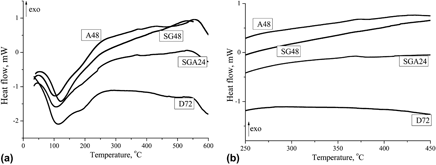Crossref Citations
This article has been cited by the following publications. This list is generated based on data provided by
Crossref.
McCracken, Christie
Zane, Andrew
Knight, Deborah A.
Dutta, Prabir K.
and
Waldman, W. James
2013.
Minimal Intestinal Epithelial Cell Toxicity in Response to Short- and Long-Term Food-Relevant Inorganic Nanoparticle Exposure.
Chemical Research in Toxicology,
Vol. 26,
Issue. 10,
p.
1514.
Vu, Thu Ha Thi
Au, Hang Thi
Tran, Lien Thi
Nguyen, Tuyet Mai Thi
Tran, Thanh Thuy Thi
Pham, Minh Tu
Do, Manh Hung
and
Nguyen, Dinh Lam
2014.
Synthesis of titanium dioxide nanotubes via one-step dynamic hydrothermal process.
Journal of Materials Science,
Vol. 49,
Issue. 16,
p.
5617.
Pang, Yean Ling
Lim, Steven
Ong, Hwai Chyuan
and
Chong, Wen Tong
2014.
A critical review on the recent progress of synthesizing techniques and fabrication of TiO2-based nanotubes photocatalysts.
Applied Catalysis A: General,
Vol. 481,
Issue. ,
p.
127.
Liu, Nan
Chen, Xiaoyin
Zhang, Jinli
and
Schwank, Johannes W.
2014.
A review on TiO2-based nanotubes synthesized via hydrothermal method: Formation mechanism, structure modification, and photocatalytic applications.
Catalysis Today,
Vol. 225,
Issue. ,
p.
34.
Preda, Silviu
Rutar, Melita
Umek, Polona
and
Zaharescu, Maria
2015.
A study of thermal properties of sodium titanate nanotubes synthesized by microwave-assisted hydrothermal method.
Materials Research Bulletin,
Vol. 71,
Issue. ,
p.
98.
Tryba, B.
Orlikowski, J.
Wróbel, R. J.
Przepiórski, J.
and
Morawski, A. W.
2015.
Preparation and Characterization of Rutile-Type TiO2 Doped with Cu.
Journal of Materials Engineering and Performance,
Vol. 24,
Issue. 3,
p.
1243.
Bilgin, Nursev
Agartan, Lutfi
Park, Jongee
and
Ozturk, Abdullah
2015.
Advances in Materials Science for Environmental and Energy Technologies IV.
p.
177.
Li, Jun
Wang, Zhiqiang
Zhao, Ankang
Wang, Jian
Song, Yang
and
Sham, Tsun-Kong
2015.
Nanoscale Clarification of the Electronic Structure and Optical Properties of TiO2 Nanowire with an Impurity Phase upon Sodium Intercalation.
The Journal of Physical Chemistry C,
Vol. 119,
Issue. 31,
p.
17848.
Anastasescu, Crina
Mihaiu, Susana
Preda, Silviu
and
Zaharescu, Maria
2016.
1D Oxide Nanostructures Obtained by Sol-Gel and Hydrothermal Methods.
p.
21.
Alguacil, Francisco Jose
Lopez, Felix Antonio
and
Garcia-Diaz, Irene
2016.
Extracting metals from aqueous solutions using Ti-based nanostructures: a review.
Desalination and Water Treatment,
Vol. 57,
Issue. 37,
p.
17603.
Dossin Zanrosso, Crissie
Piazza, Diego
and
Azário Lansarin, Marla
2018.
Polymeric hybrid films with photocatalytic activity under visible light.
Journal of Applied Polymer Science,
Vol. 135,
Issue. 23,
Mohammadi, Kyana
Moshaii, Ahmad
Azimzadehirani, Maryam
and
Pourbakhsh, Zahra-Sadat
2019.
Photoelectrochemical activity of Ag loaded TiO2 nanotube arrays produced by sequential chemical bath deposition for water splitting.
Journal of Materials Science: Materials in Electronics,
Vol. 30,
Issue. 2,
p.
1878.
Parvulescu, Viorica
Ciobanu, Madalina
and
Petcu, Gabriela
2020.
Handbook of Smart Photocatalytic Materials.
p.
103.
Bouayed, Mounia-aouicha
Ameur, Nawal
Taieb-Brahimi, Fawzia
Hidouri, Tarek
Naser, Samia
Ghouas, Halima
Bedrane, Sumeya
Al-Shahri, Badria M.
and
Bachir, Redouane
2021.
Investigation of novel titanate nanotubes modified with Ce, Fe, Zn and Zr for efficient dye degradation performance, inhibition of bacterial and fungal growth and anticorrosion activity in acid medium.
Reaction Kinetics, Mechanisms and Catalysis,
Vol. 134,
Issue. 1,
p.
517.
Baati, Tarek
Ben Brahim, Mounir
Salek, Abir
Selmi, Mouna
Njim, Leila
Umek, Polona
Aouane, Aicha
Hammami, Mohamed
and
Hosni, Karim
2022.
Flumequine-loaded titanate nanotubes as antibacterial agents for aquaculture farms.
RSC Advances,
Vol. 12,
Issue. 10,
p.
5953.
Nasr, Samia
2022.
Application of silver doped titanate nanotubes in the degradation of methylene blue and the degradation of fungus and bacteria. Experimental and theoretical studies.
Reaction Kinetics, Mechanisms and Catalysis,
Vol. 135,
Issue. 5,
p.
2879.
Ji, Haodong
Ni, Jinren
Zhao, Dongye
and
Liu, Wen
2022.
Application of Titanate Nanotubes for Photocatalytic Decontamination in Water: Challenges and Prospects.
ACS ES&T Engineering,
Vol. 2,
Issue. 6,
p.
1015.
Ma, Yongdi
Chen, Xi
Wang, Shuai
Dong, Hualin
Zhai, Xiaoying
Shi, Xin
Wang, Jianzu
Ma, Rujiang
and
Zhang, Wangqing
2022.
Significantly enhanced antifouling and separation capabilities of PVDF membrane by synergy of semi-interpenetrating polymer and TiO2 gel nanoparticles.
Journal of Industrial and Engineering Chemistry,
Vol. 108,
Issue. ,
p.
15.
Bouayed, Mounia-Aouicha
Ameur, Nawal
Chaker, Hanane
Taieb-Brahimi, Fawzi
Bedrane, Sumeya
Saidi, Fatiha
and
Bachir, Redouane
2023.
Synthesis, characterization of vanadium-doped titanate nanotubes nanocatalysts towards degradation of methyl orange, bacteria, and fungus.
Reaction Kinetics, Mechanisms and Catalysis,
Vol. 136,
Issue. 6,
p.
3191.
Badea, Alina
Neagu , Simona
Enache , Madalin
Ruginescu , Robert
Anastasescu , Mihai
Anastasescu , Crina
Preda , Silviu
Zaharescu , Maria
and
Lazar , Veronica
2023.
Improving Soil Fertility through the Use of Novel Oxidic Materials Functionalized with Halophilic Bacterial Enzymes.
Romanian Journal of Biology - Plant Biology,
Vol. 69,
Issue. 1-2,
p.
7.
